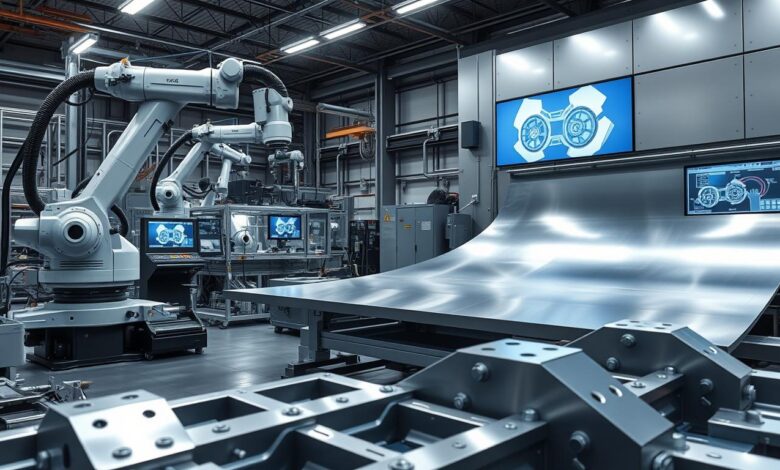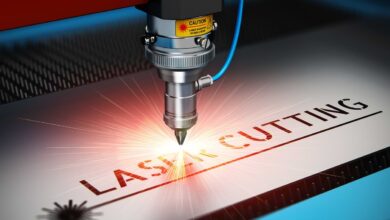The Evolution of Heavy Metal Fabrication: How Modern Technology Is Reshaping the Industry

Heavy metal fabrication has been the backbone of industrial progress for over a century. From towering bridges and complex refinery systems to precision-engineered components in power plants, the process of transforming raw metal into durable, high-performance structures remains essential to modern infrastructure. Yet, what sets today’s fabrication industry apart is how dramatically technology has evolved to meet growing demands for precision, efficiency, and sustainability.
A Look Back at the Foundations of Fabrication
In its earliest days, heavy metal fabrication relied heavily on manual craftsmanship. Skilled fabricators shaped and welded components using traditional tools and years of experience. While these methods built the foundation for industries like energy, chemical processing, and transportation, they also had limitations—particularly in scalability, consistency, and material optimization.
As industrial needs grew, so did the complexity of fabrication projects. Large-scale systems demanded tighter tolerances, faster turnaround times, and greater material diversity. This pressure set the stage for the technological revolution that would redefine what fabrication could achieve.
The Rise of Precision and Automation
The most transformative leap in heavy metal fabrication has come from automation and precision machining. CNC (Computer Numerical Control) equipment, laser cutters, and robotic welding systems have introduced a level of accuracy that manual processes simply can’t match. With digital controls guiding every cut, bend, and weld, fabricators can produce complex parts to exact specifications—often within millimeters of tolerance.
Automation not only ensures consistency across production runs but also enhances safety and speed. Robotic systems can handle heavy materials and high-temperature operations, reducing the physical strain and risk for human operators. The result is a more efficient workflow and a higher-quality final product.
Digital Design and Advanced Engineering Tools
Modern fabrication starts long before metal ever meets a torch. Today’s engineers rely on CAD (Computer-Aided Design) and 3D modeling software to visualize and simulate components in a virtual environment. This allows potential issues—such as stress points or fitment conflicts—to be identified early in the design phase, saving time and costly rework during production.
Paired with CAM (Computer-Aided Manufacturing) systems, these tools enable seamless data transfer from digital blueprints to automated machinery. This digital thread ensures that design intent is perfectly aligned with manufacturing execution.
Material Science and Fabrication Innovation
As industries evolve, so do the materials they depend on. Heavy metal fabricators now work with a broader range of metals, including stainless steel, carbon steel, aluminum, and specialty alloys. Each material offers unique properties for strength, corrosion resistance, and thermal performance—allowing fabricators to tailor solutions for demanding environments like oil refineries, chemical plants, and power generation facilities.
Advancements in material science have also opened the door to more sustainable fabrication. By optimizing cutting patterns and recycling scrap materials, fabricators reduce waste and minimize environmental impact without compromising performance.
Quality, Compliance, and Industry Standards
Modern heavy metal fabrication is not just about building—it’s about building to standard. Compliance with rigorous industry codes such as ASME, AWS, and ISO ensures that each project meets structural, safety, and performance requirements. Non-destructive testing (NDT) methods like ultrasonic or radiographic inspection have become integral to verifying weld integrity and overall quality assurance.
These evolving standards continue to push fabricators to maintain higher levels of precision, documentation, and accountability—an evolution that benefits industries and end users alike.
The Future of Heavy Metal Fabrication
Looking ahead, the next frontier for heavy metal fabrication lies in smart manufacturing. Integrating data analytics, IoT (Internet of Things), and AI-driven process control is paving the way for predictive maintenance, real-time performance monitoring, and even more efficient resource management.
As fabrication technology advances, the industry is moving toward a model that emphasizes sustainability, automation, and innovation—without losing the craftsmanship and expertise that built its foundation.
In essence, the evolution of heavy metal fabrication is a story of progress through precision. While the tools, materials, and techniques have advanced, the goal remains the same: to create durable, reliable structures that drive the world’s industries forward. Today’s fabricators stand at the intersection of tradition and technology—transforming raw metal into the infrastructure that shapes modern life.
Read More Trekkers





